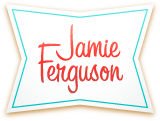On the edge of a cliff
I’ve added an extra level of complication – and fun! – to my life by signing up for the Cliffhangers workshop taught by Dean Wesley Smith. This is the third class I’ve taken from Dean, and the first one I’ve taken online; he just started offering online workshops this year.
I’ve read lots of good cliffhangers, but finding the really great ones when you’re trying to look for examples to study is surprisingly difficult. One tried and true way to end a chapter or story section is to have your character become unconscious. They can faint, get hit over the head, be anesthetized…but just go try to find a scene like this in a book right now! It’s funny how hard it is to find examples of something you’ve seen done a zillion times.
Perseverance helps, and I’ve been learning more about how to write good cliffhangers by re-reading the ends of chapters – as well as the beginnings of chapters, because it’s important to start the next chapter in a way that supports, and often even enhances, the power of the cliffhanger.
To complement the class, I’ve been browsing through my writing books to see what other people have to say on the subject. I found this in Writing the Breakout Novel by Donald Maass:
“Cliff-hangers are a tried and true, if clumsy, way to propel a reader from scene to scene or chapter to chapter.”
Maass is indeed correct that many, many books utilize cliffhangers in a simple way, and he points out that even when “clunky” they are still useful. Who doesn’t feel the tension when you have to put a book down not knowing if the hero will be able to escape from what is clearly imminent death? But there is a lot more you can do than leave your readers on pins and needles. You can reach into their hearts and squeeze.
This is done masterfully in Phillip Pullman’s The Golden Compass. In the world the protagonist Lyra lives in, every human being has a ‘daemon’ which is essentially his or her soul in an animal form. One chapter ends with Lyra’s discovery of a young boy whose daemon has been severed from him; once severed a daemon can never be reattached. It’s a horrifying thing for Lyra to find, and it’s horrifying to the reader as well – partly because the reader feels Lyra’s pain, and partly because the concept of having one’s soul removed is so abhorrent. This cliffhanger is incredibly powerful is because it affects the reader on a deep emotional level.
Our standard way of looking at cliffhangers matches this excerpt from the Wikipedia entry on cliffhangers:
“A cliffhanger or cliffhanger ending is a plot device in fiction which features a main character in a precarious or difficult dilemma, or confronted with a shocking revelation at the end of an episode of serialized fiction. A cliffhanger is hoped to ensure the audience will return to see how the characters resolve the dilemma.”
That’s how I looked at cliffhangers before Dean’s class, but my viewpoint has changed. I now look at them instead as: what will make the reader feel compelled to turn the page? Whatever form your cliffhanger takes – whether there’s danger, or a secret is revealed, or you merely provide a subtle hint about something that might happen later – it should keep your readers up at night because they can’t put your book down. That’s what really matters, and that’s why I’m studying cliffhangers.
And since I’m on the topic of cliffs, here’s a photo I took while hanging off of one years ago:

